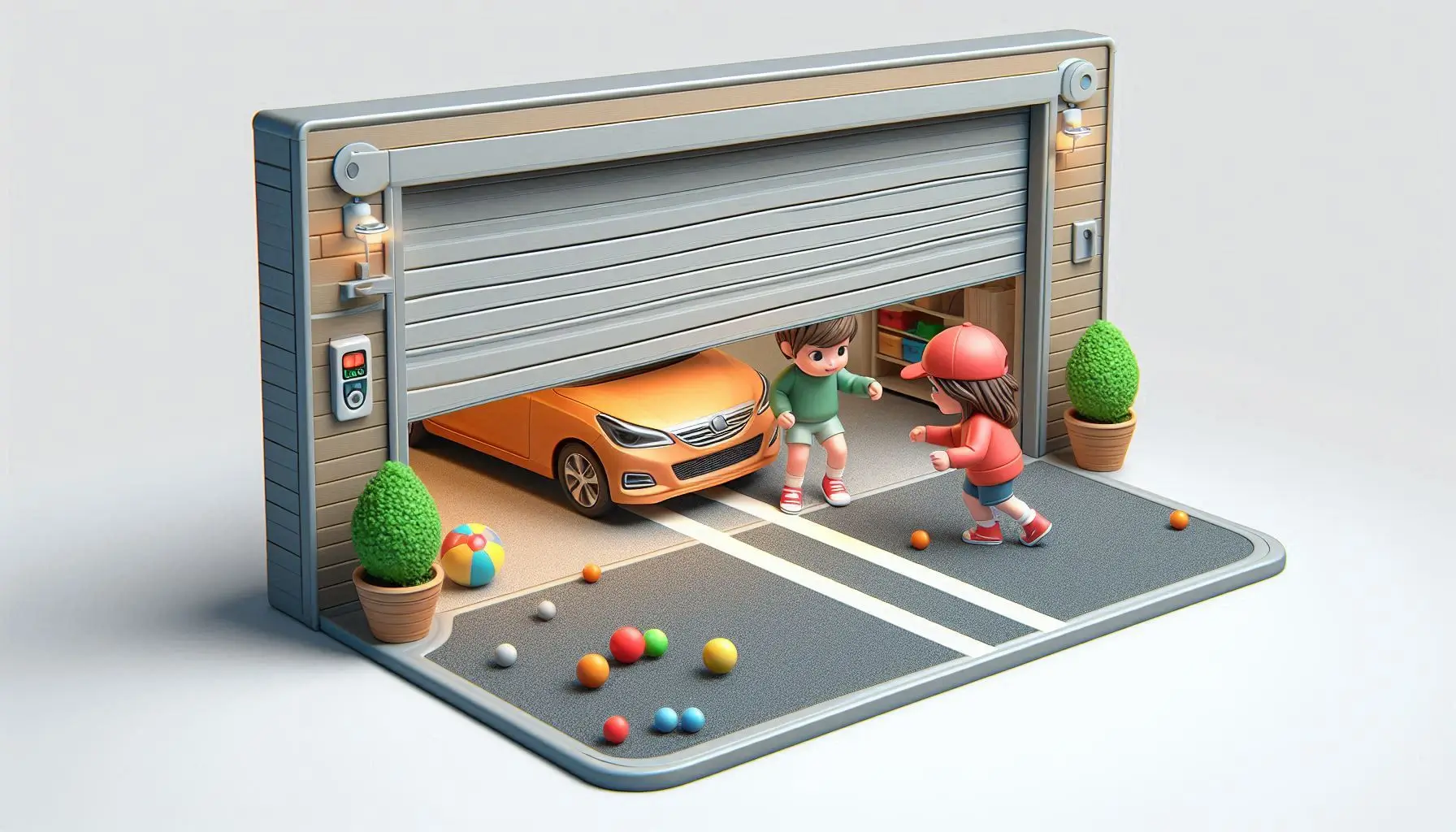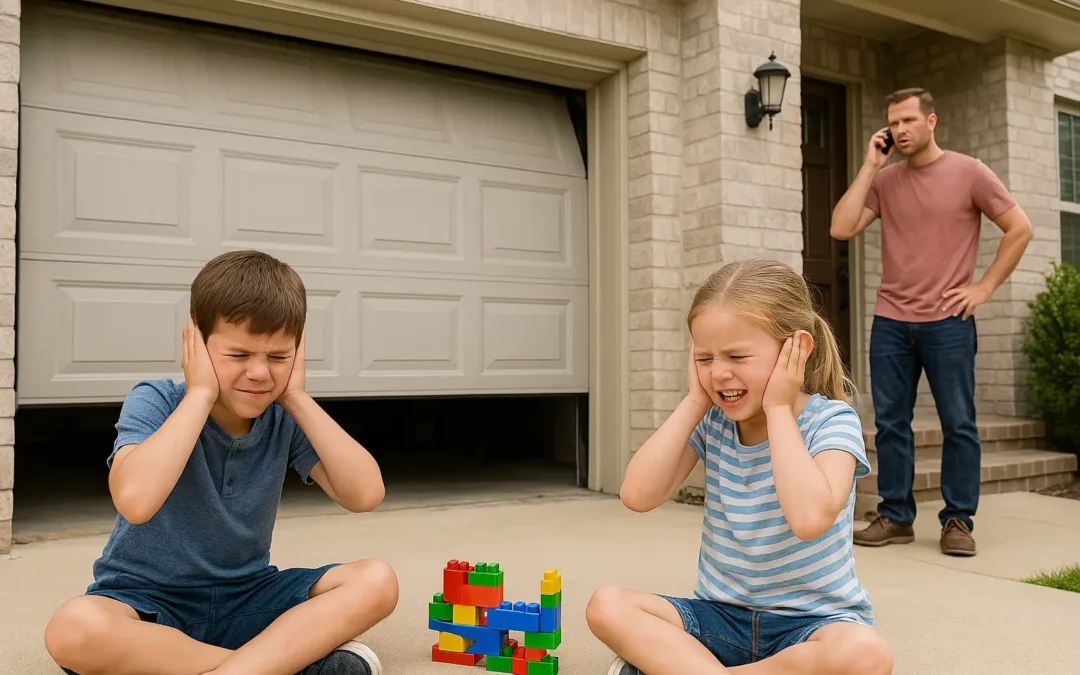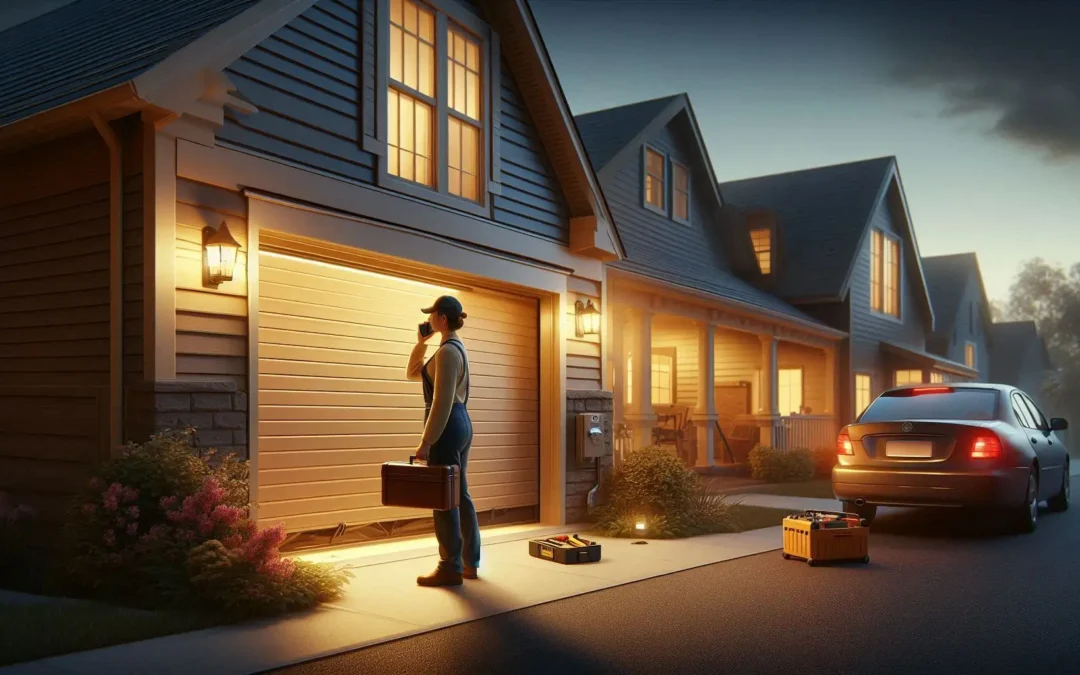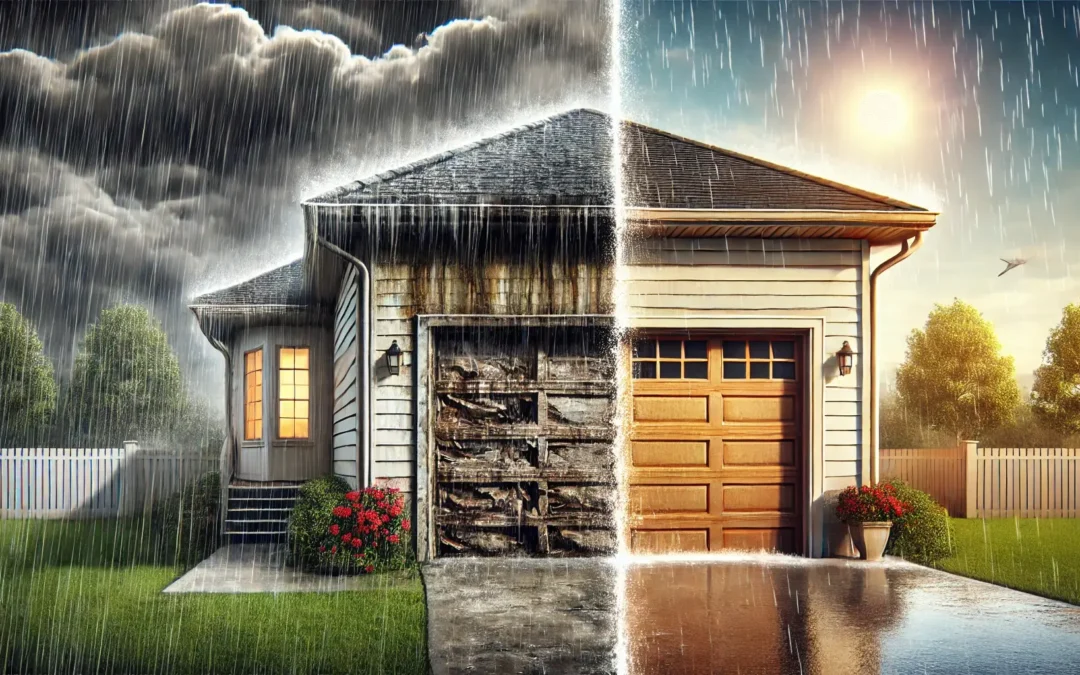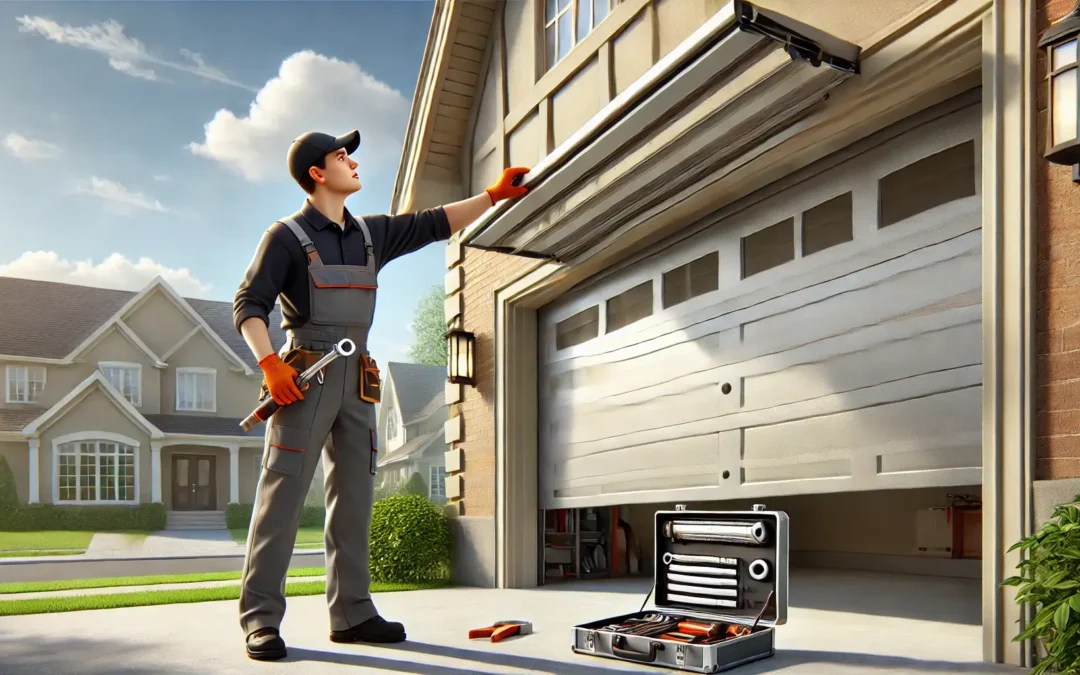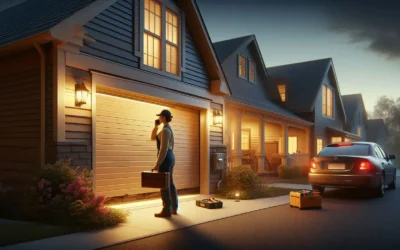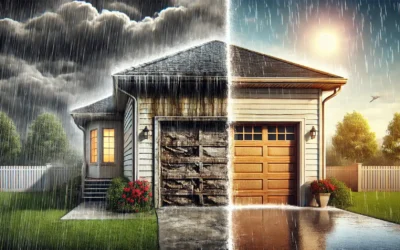Garage door sensors are devices designed to detect the presence of objects or people in the path of the closing door. Their primary function is to prevent accidents and damage by stopping or reversing the door’s movement upon detecting an obstacle. These sensors come in various types, including infrared, pressure, proximity, and security sensors.
Types of garage door sensors
- Infrared Sensors: These are the most common types, emitting an infrared beam between two points (transmitter and receiver) positioned on either side of the door. If this beam is interrupted by an object or person, the sensor sends a signal to the control unit to stop or reverse the door’s movement. They are effective in detecting small objects and pets, adding an extra layer of security.
- Pressure Sensors: Usually installed at the bottom edge of the door, these sensors work by detecting physical pressure when something or someone comes into contact with them. If pressure is exerted on the sensor, the door stops and, in some cases, opens again. They are ideal for detecting obstacles that may not be visible to other types of sensors.
- Proximity Sensors: These sensors use technologies like ultrasound or radar to detect nearby objects without the need for physical contact. They are highly accurate and can detect objects at variable distances, depending on the setup. They are especially useful in environments where security is a priority and more advanced detection is required.
- Security Sensors: These sensors combine multiple technologies to provide more precise and reliable detection. They may include infrared, pressure, and proximity sensors, working together to offer comprehensive protection. These sensors are common in advanced garage door systems and in installations requiring a high level of security.
Why is a garage door sensor important?
Installing sensors on garage doors is crucial for several reasons, primarily related to safety. Without these devices, the risk of accidents increases significantly. Sensors not only protect people and pets but also prevent damage to vehicles and other objects. Additionally, sensors contribute to safer door operation by ensuring it stops or reverses its movement when detecting an obstacle, thereby preventing unnecessary wear on the door mechanism.
Installation of garage door sensors
Proper installation of garage door sensors is essential for their proper operation. Below are the necessary steps for a correct installation:
Steps for proper installation
Prepare the installation area: Before starting, ensure the area around the garage door is clean and clear. This will facilitate the installation process and ensure the sensors work correctly.
Identify the appropriate location for the sensors: Infrared sensors should be installed at a height of approximately 15 cm from the ground on both sides of the garage door. This location allows the sensors to detect small objects and pets effectively.
- Installation of infrared sensors:
- Attach the sensor brackets to each side of the garage door, ensuring they are level.
- Place the sensors in the brackets and adjust them according to the manufacturer’s instructions.
- Connect the sensor cables to the garage door control unit, following the wiring diagram provided by the manufacturer.
2. Connecting the sensor system to the control unit:
- Locate the garage door control unit and open the connection compartment.
- Connect the sensor cables to the corresponding terminals on the control unit.
- Ensure all connections are secure and properly insulated to prevent short circuits.
3. Setting up and testing the sensors:
- Turn on the control unit and perform an initial test to ensure the sensors are functioning correctly.
- Place an object in the path of the door and observe if the sensors detect it and stop the door.
- Adjust the sensor alignment if necessary to ensure accurate detection.
Maintenance of garage door sensors
Regular maintenance of sensors is vital to ensure their continuous and effective operation. Here are some recommended practices:
- Regular inspections: Perform periodic visual inspections to ensure the sensors are not obstructed by dirt or debris.
- Cleaning and adjusting sensors: Regularly clean the lenses of infrared sensors with a soft cloth and adjust their alignment if necessary.
- Identifying and troubleshooting common issues: If sensors are not functioning correctly, check that the cables are intact and the connections are secure. Also, ensure the sensors are properly aligned.
Signs that a sensor needs repair or replacement
Garage door sensors may develop faults over time. Here are some signs that a sensor may need repair or replacement:
- Intermittent operation: If the garage door stops or reverses its direction erratically, the sensors may be failing.
- Lack of response: If sensors do not react when an object is placed in their path, it is a clear sign that something is wrong.
- Physical damage: Any visible damage to the sensors, such as cracks in the lenses or casing, can affect their operation.
- Corrosion signs: Corrosion on sensor components, especially connectors, can cause operational failures.
- Alignment issues: If sensors are misaligned, they may not detect obstacles correctly. This can happen if the garage door has been struck or if sensors have shifted over time.
- Difficulty detecting obstacles: If sensors fail to detect small objects or pets, it indicates they may need adjustment or replacement.
- False alarms: If sensors activate the garage door without apparent reason, it could indicate a defective sensor or external interference.
When is the time to update or replace your garage door sensors?
Updating garage door sensors can offer several advantages, especially if you are using an older system. Here are some reasons and considerations for determining when the right time is for an update:
Advantages of new sensor models
- Greater accuracy and reliability: Modern sensors are generally more accurate and reliable than older models. They incorporate advanced technologies that enhance detection and reduce false alarms, resulting in increased safety and efficiency.
- Ease of installation and maintenance: New sensors may be easier to install and maintain due to improvements in design and technology. This can reduce the time and effort required to keep your garage door system in perfect working order.
Factors to consider when replacing or updating a garage door sensor
- Compatibility: Before updating, ensure the new sensors are compatible with your existing garage door system. Some older systems may not be compatible with the latest technologies, so it is important to check the manufacturer’s specifications.
- Cost: Evaluate the cost of new sensors compared to the benefits they offer. While modern sensors may have a higher initial cost, their increased accuracy, reliability, and ease of maintenance can justify the long-term investment.
- Installation: Consider whether installing new sensors can be done yourself or if you will need the assistance of a professional. Some advanced systems may require specific technical knowledge for proper installation.
- Technology: Opt for sensors that incorporate the latest technologies to improve the safety and efficiency of your garage door system. This includes features such as real-time obstacle detection, integration with home automation systems, and self-diagnostic capabilities to identify and resolve issues.
Updating or replacing your garage door sensors not only improves the safety and functionality of your garage door but can also offer a more convenient and reliable user experience.
If you are unsure about performing an inspection, maintenance, or installation of a sensor system, we specialize in the repair, installation, and maintenance of commercial and residential garage door systems. Contact us for assistance.
Conclusion
Proper installation and maintenance of garage door sensors are essential to ensure the safety and efficient operation of your garage door system. Be sure to follow the correct steps for installation and perform regular maintenance to avoid long-term issues. Upgrading your sensors can offer significant improvements in terms of accuracy and reliability.
Frequently Asked Questions
- How often should I check my garage door sensors?
It is recommended to check your garage door sensors at least once a month. During these inspections, ensure the sensors are clean, properly aligned, and free of visible damage. Conducting monthly tests will help ensure the sensors are functioning correctly and that the garage door operates safely. - How much does it cost to install new garage door sensors?
The cost of installing new garage door sensors can vary depending on the type of sensors and whether you decide to do it yourself or hire a professional. In general, sensors can cost between 20 and 100 euros. If you hire a professional, the installation cost can increase by an additional 50 to 150 euros, depending on the complexity of the job and the installer’s rate. - Can I install garage door sensors myself?
Yes, installing garage door sensors can be done yourself, especially if you have some experience with DIY projects and follow the manufacturer’s instructions carefully. However, if you do not feel comfortable or confident in performing the installation, it is best to hire a professional to ensure it is done correctly and to avoid potential issues or safety risks. - What type of sensor is most reliable for garage doors?
Infrared sensors are typically the most reliable for garage doors due to their accuracy and ability to effectively detect obstacles. These sensors use an infrared beam of light that, when interrupted by an object or person, sends a signal to stop or reverse the garage door. However, the choice of sensor will also depend on your specific needs and the environment in which it will be used. Factors such as security, frequency of use, and budget should be considered when selecting the appropriate type of sensor.
If you need assistance with the installation, maintenance, or update of your garage door sensors, feel free to contact us for safe and effective work.

